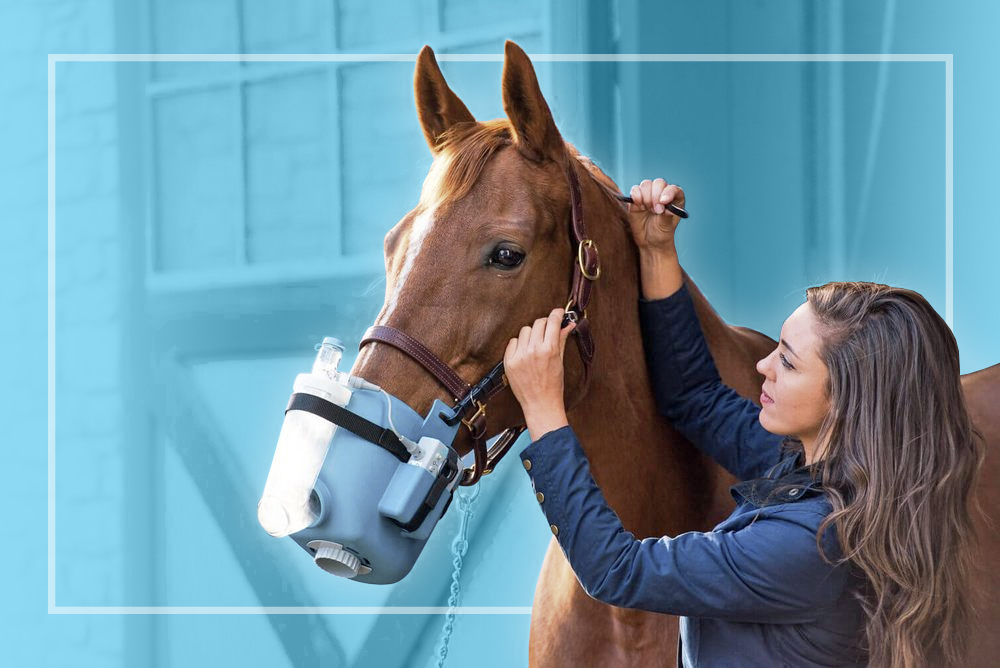By Stephanie Davis, DVM
Owner & Sport Horse Veterinarian, Davis Equine;
Three-Day Eventer;
Barn Manager - The Plains, VA
The horse industry, like many others, is cluttered with products. Each company has its own spin on why their product is the best choice for your horse. Even as a veterinarian, I often find it difficult to determine the “right” product for my own horse. With that in mind, I thought it would be relevant to discuss nebulizers from the consumer’s perspective. Why would I choose one nebulizer over the other?
First, let’s review what types of nebulizers are available and how they work. There are three types of nebulizers: jet, ultrasonic, and mesh. Jet nebulizers require a compressor that is either electric or battery powered. This compressor connects to tubing that introduces the air into the medication cup. The air interacts with the solution (medication) to be nebulized and creates a liquid film that is broken intro droplets because of the surface tension created. The actual physics is a bit more complicated than that, but essentially, this is how the solution is aerosolized from a liquid to a small particle mist with a jet nebulizer.
An ultrasonic nebulizer uses electricity to generate a high frequency ultrasonic wave. This ultrasound wave causes a physical vibration of a piezoelectric element. The element comes into contact with the liquid (medication) and the high frequency vibration will turn the liquid into a mist.
Finally, there is the mesh nebulizer. The mesh takes the ultrasonic concept one step further in that the mesh and piezoelectric element are in contact with each other. The element creates rapid physical vibration of this mesh (that has a minimum of 1,000 small holes within it) that force the liquid through these holes creating the desired small particle mist.
So, now that we understand the types of nebulizers, what does it all mean? Below is a chart of the advantages and disadvantages of each. More importantly, I wanted to discuss how to make the right choice for you and your horse. It is important to discuss each individual case with your veterinarian.
At the end of the day, all product investments are the same. Often, the cheaper one may be able to do the job, but may break easier or be more difficult to use. The more expensive product may be easier to use, less likely to break and need repairs and potentially perform better. No matter what you are trying to choose; a nebulizer, a saddle, or a medical treatment for your horse, it is important to make a well informed decision. That way, you have considered the pros and cons and have fair expectations for that product. Managing expectations is something that I think is very often missed in the veterinary field as well as in the development and selling of products. If you are educated ahead of time and know the advantages and disadvantages of your choices, most outcomes (whether good or bad) are not surprising and troubleshooting is much easier.
*The inefficiency mentioned regarding jet nebulizers refer to not only length of time it takes to assemble and perform treatment, but also that particle size can be easily affected if improperly used. There is a lot of room for error and too large a particle size if the gas flow from the compressor is not used according to the manufacture recommendation. Therefore, “making” a jet nebulizer is not recommended because the mathematics and physics have to be correct for the nebulizer to perform as expected.
**Large residual volume under the ultrasonic nebulizer column refers to the amount of solution left over that was unable to be nebulized. This reduces the amount of medication that is able to get to the patient. To resolve that, you can increase the volume used, but that also increases cost and makes it inefficient as the increased volume will also increase treatment time.
***Degradation of heat sensitive materials refers to the fact that the ultrasonic technique creates heat that can denature proteins and render certain medications inactive.
Published April 2016.




